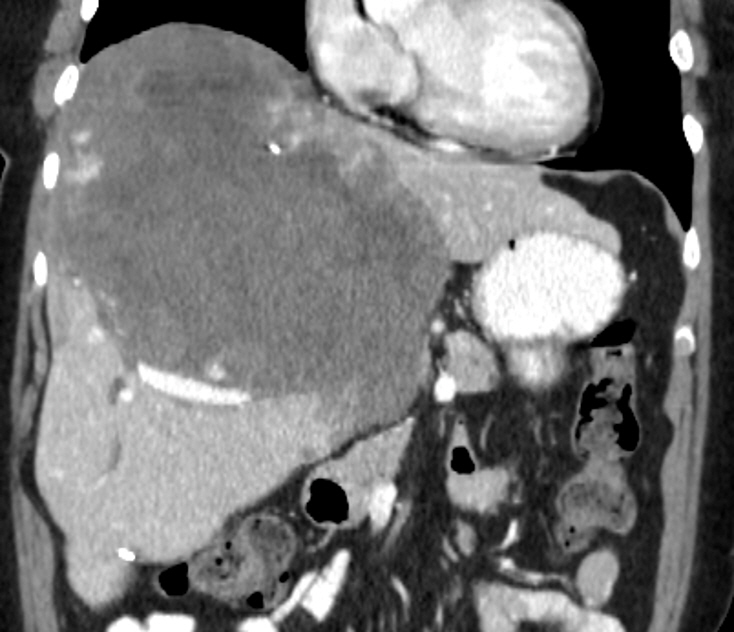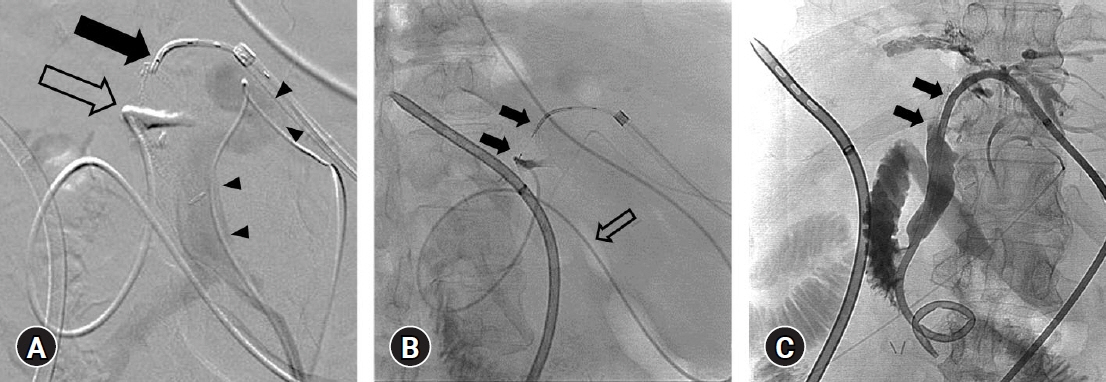Clin Endosc.
2023 May;56(3):384-387. 10.5946/ce.2022.098.
Percutaneous creation of a choledocho-choledochostomy for intractable iatrogenic bile duct injury
- Affiliations
-
- 1School of Medicine, Duke University, Durham, NC, USA
- 2Department of Radiology, Duke University, Durham, NC, USA
- 3Department of Surgery, Duke University, Durham, NC, USA
- KMID: 2542467
- DOI: http://doi.org/10.5946/ce.2022.098
Figure
Reference
-
1. Günther RW, Schild H, Thelen M. Percutaneous transhepatic biliary drainage: experience with 311 procedures. Cardiovasc Intervent Radiol. 1988; 11:65–71.2. Ball CG, Lillemoe KD. Chapter 113. Prevention and management of bile duct injury. In : Yeo CJ, editor. Shackelford's surgery of the alimentary tract. 2 volume set. 8th ed. Elsevier;2019. p. 1340–1351.3. Sicklick JK, Camp MS, Lillemoe KD, et al. Surgical management of bile duct injuries sustained during laparoscopic cholecystectomy: perioperative results in 200 patients. Ann Surg. 2005; 241:786–792. discussion 793-795.4. Habibollahi P, Benjamin JL, X Bai H, et al. Percutaneous fluoroscopic-guided creation of neoanastomosis for the treatment of biliary occlusions. Cardiovasc Intervent Radiol. 2020; 43:1671–1678.5. McCarthy CJ, Thabet A, Yamada K, et al. Percutaneous creation of biliary-enteric neoanastomosis for anastomotic biliary occlusion following living donor liver transplantation. Liver Transpl. 2017; 23:262–265.6. Robins C, Xiao N, Salem R, et al. Percutaneous biliary neo-anastomosis or neo-duct creation using radiofrequency wires. Cardiovasc Intervent Radiol. 2022; 45:337–343.7. Tocchi A, Mazzoni G, Liotta G, et al. Management of benign biliary strictures: biliary enteric anastomosis vs endoscopic stenting. Arch Surg. 2000; 135:153–157.8. Riaz A, Salem R. Future directions of percutaneous biliary interventions. Semin Intervent Radiol. 2021; 38:373–376.
- Full Text Links
- Actions
-
Cited
- CITED
-
- Close
- Share
- Similar articles
-
- Interventional Treatment for a Choledocho-Colonic Fistula Due to Bile Duct Injury after Laparoscopic Cholecystectomy: A Case Report
- Transection of Distal Common Bile Duct by Bike Handlebar in a Child
- Successful non-surgical treatment for isolated right anterior section bile duct injury following laparoscopic cholecystectomy: Report of a case
- A Case of Mucin - hypersecreting Tumors of Pancreas and Bile Duct with Inflammatory Choledocho - pancreatic Fistula
- Recent classifications of the common bile duct injury




